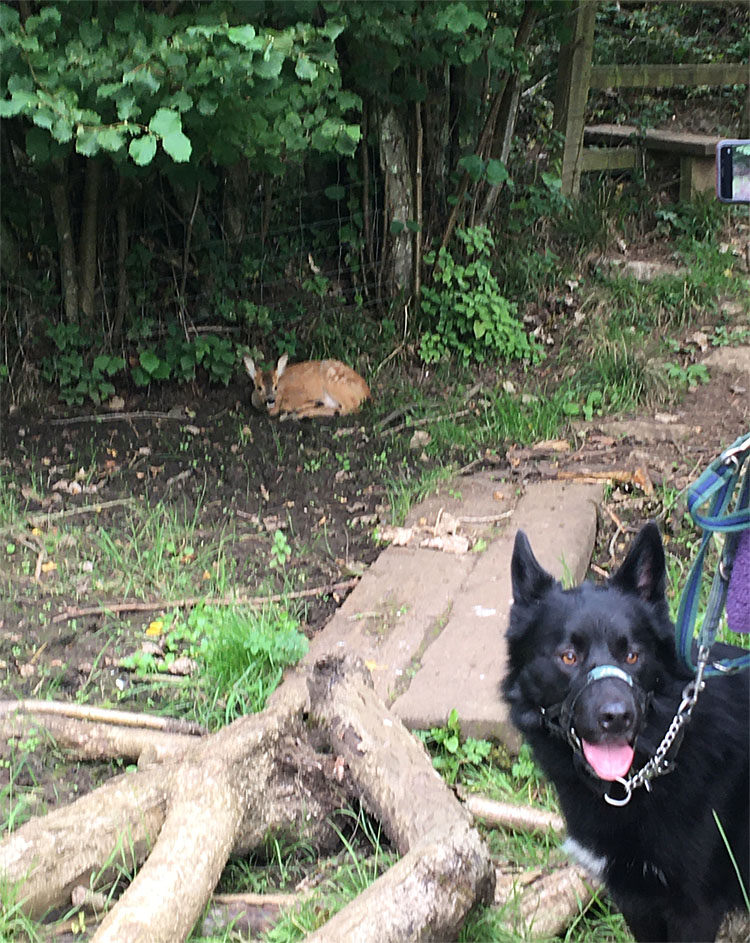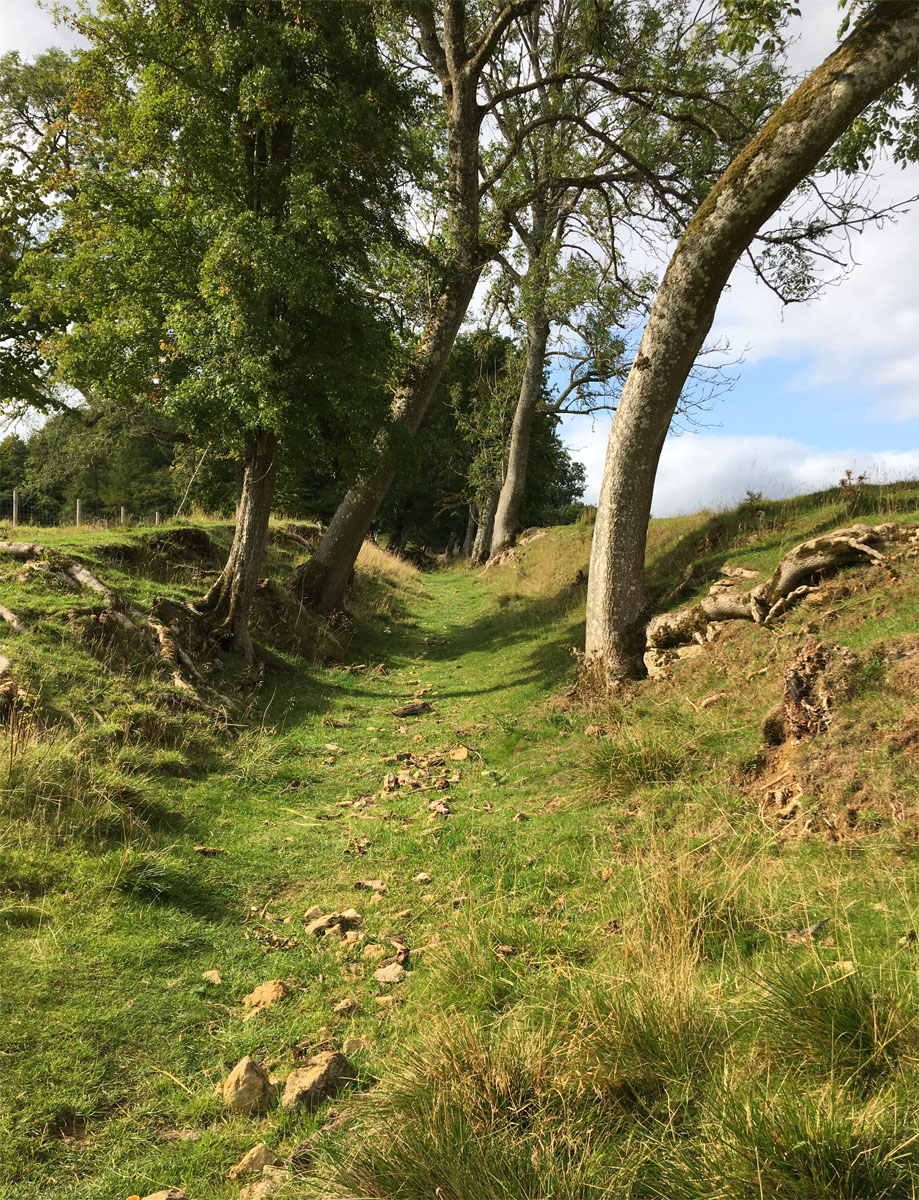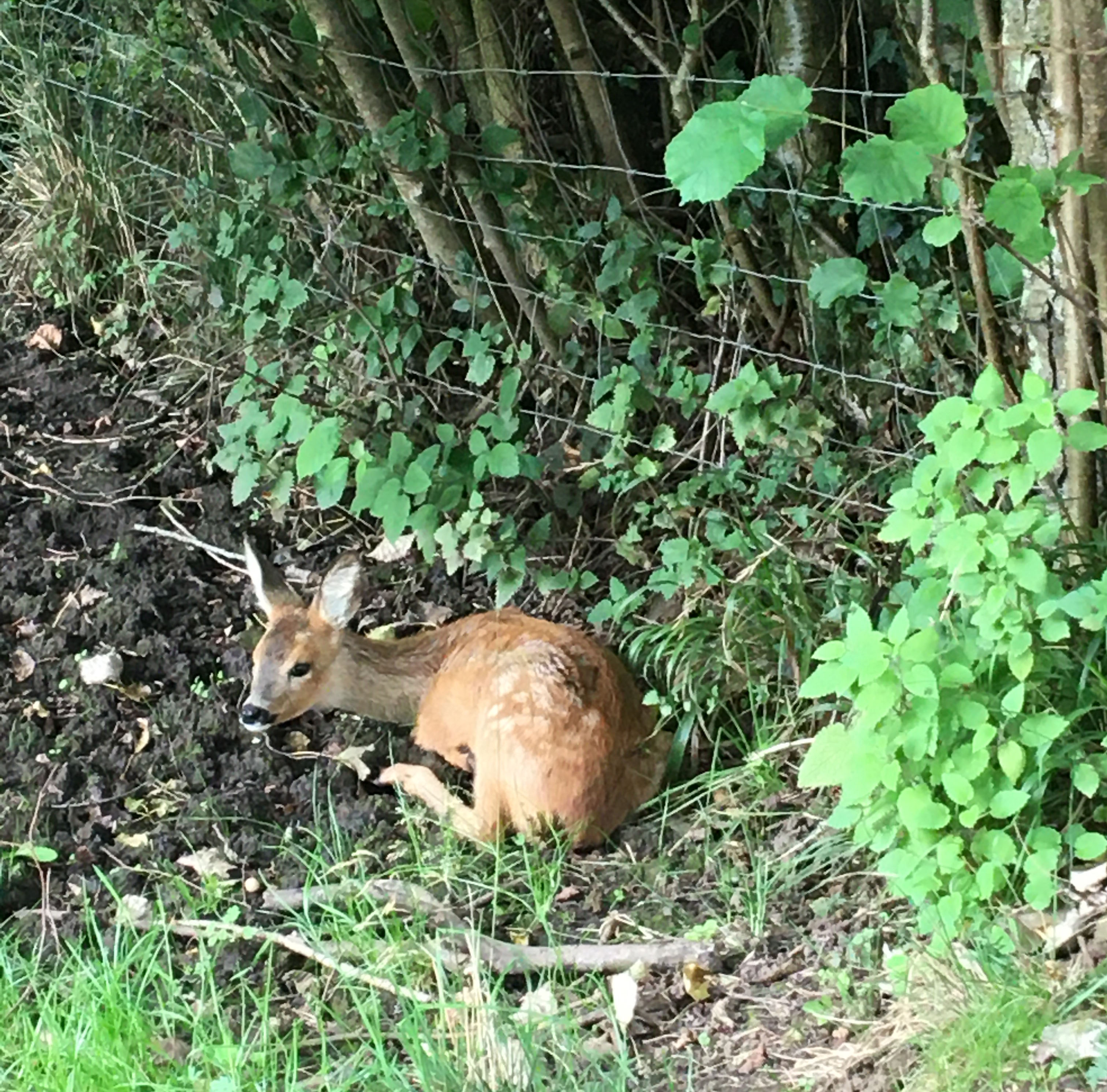Or maybe not.

Let’s start at the beginning, or at least as close to it as I can fit in a single blog post. The Cotswold Hills of Gloucestershire and Oxfordshire glow honey-yellow with oolite, a Jurassic limestone that brightens paths and hides people – the latter within England’s prettiest houses, the former extending thousands of miles through what is likely to become a new national park.

I was walking one of those paths earlier this week, winding through slate-capped villages, admiring hedgerows crammed with wild fruit, evading curious farm animals, seeing an apple tree or two.

But there came a moment when my friend and I, plus a large dog, were carefully navigating the boggy ground near a spring. I looked up, and there it was.

A roe deer fawn – four months old and still spotted, and still doing precisely what its mother would ask of it: bed down and pretend to be a statue. This is a photo with my iPhone! Despite both being highly experienced wildlife trackers, we were that close before we were aware of it. And astonishingly, the dog was entirely oblivious to his company.
We moved past swiftly and quietly, coming within four feet – we had no choice, the stile forced us that way – yet the baby did not abandon its strategy, and still the dog failed to see it. Navigation successful, we left it to Mother’s return.

It seems incredible, but it is a strategy that deer deploy all over the world to avoid wolves, foxes and other wild canids. Very young roe deer are odourless, but this one must be past that stage. Dogs are extremely sensitive to movement, but have more difficulty in identifying stationary objects. That said, I have seen my own dog spot sleeping cats on several occasions.
Regardless, it was a strange and beautiful insight into the roe deer’s world of dewy fields and tangled copses.

That really is amazing about the lack of any odour that might attract predators. The countryside is sure beautiful over there.
LikeLiked by 1 person
The Cotswolds are picture postcard England. Not as wild or high as the uplands of the English north but it is pretty, peaceful and supports a lot of wildlife, as well as the cutest villages in the country 🙂 It is a very old landscape with deserted medieval villages and Roman roads.
LikeLiked by 1 person
Wonderful. It’s not the very wild natural land we have here, but I love the history that you have and we lack. At least you can walk there. Just today I heard about another grizzly attack, so I’m not walking anywhere in our “nature.”
LikeLiked by 1 person
I also didn’t know that about the odour. Interesting!
LikeLiked by 1 person
I hope the mother choses a better spot to hide it in next time though! Perhaps no one had been down that path for some time.
LikeLike
I didn’t know either that young deer are odourless. The fawn must have been very scared at your arrival with a dog, but stuck to its strategy. Beautiful countryside. Thanks for sharing those photos.
LikeLiked by 1 person
It is difficult to know. When I was living in BC, I got caught up in the rescue of a mule deer fawn that had sadly been stolen from the wild by someone who thought his kids would like it as a pet. It was very trusting. Maybe an instinctive fear of strange creatures starts to kick in later. In any case, hopefully next time this one will be left in a different spot.
LikeLiked by 1 person
Everything you tell me Adele is an eye opener. You have the most incredible luck in finding beautiful wildlife too. How lovely to find a baby roe deer. I’m glad you share these photos and tales.
LikeLiked by 1 person
Thanks Angela! I could hardly believe what I was looking at. The dog still doesn’t know what he walked past…
LikeLike
Happy outcome for all! Lovely shots, Adele.
LikeLiked by 1 person
Thanks Belinda! Yes, all’s well with the deer and it was a fantastic hike through such an interesting landscape.
LikeLiked by 1 person
An amazing encounter, clearly, the strategy works!
LikeLiked by 1 person
Indeed! Maybe one day it’ll tell its own fawns this story 🙂
LikeLiked by 1 person
Adele, how lucky of you to have such a close encounter! Amazing! Amazing images!
LikeLiked by 1 person
I was hoping for fresh air and pretty villages, and this fawn was an amazing bonus! 🙂
LikeLike
Incredible on so many levels. Wouldn’t the dog be embarrassed were he to know what he’d missed 🙂
Thanks for introducing me to oolite. That sunken pathway looks to be ancient? What an interesting path you trod!
LikeLiked by 1 person
Yes, I’m sure he would be! He usually takes in all his surroundings so his oblivion here was astonishing. It was a lively walk for him; he also got glared at by guard llamas protecting some sheep, and verbally assaulted by farmyard geese!
These paths are certainly very old, and in fact the main road through the Cotswolds is an ancient Roman route. Others are associated with deserted medieval villages. The Cotswolds’ built history goes back 5,000 years to the Neolithic long barrow at Belas Knap, and there are plenty of prehistoric standing stones dotted around the hills. I might do a historical post actually; England’s wildlife and ancient land uses are very much intertwined.
LikeLiked by 1 person
Interested to hear about the guard llamas, and geese can be intimidating too!
That long built history and that ancient land use still impacts on the environment today sounds to be fascinating.
LikeLiked by 1 person
Nice blog
LikeLiked by 1 person
Thank you!
LikeLike
Dear Adele, my mother would like to share this quote with you: “The creature was very young. He was alone in a dread universe. I crept on my knees and crouched beside him. It was a small fox pup from a den under the timbers who looked up at me. God knows what had become of his brothers and sisters. His parents must not have been home from hunting. He innocently selected what I think was a chicken bone from an untidy pile of splintered rubbish and shook it at me invitingly… the universe was swinging in some fantastic fashion around to present its face and the face was so small that the universe itself was laughing.
It was not a time for human dignity. It was a time only for the careful observance of amenities written behind the stars. Gravely I arranged my forepaws while the puppy whimpered with ill-concealed excitement. I drew the breath of a fox’s den into my nostrils. On impulse, I picked up clumsily a whiter bone and shook it in teeth that had not entirely forgotten their original purpose. Round and round we tumbled and for just one ecstatic moment I held the universe at bay by the simple expedient of sitting on my haunches before a fox den and tumbling about with a chicken bone. It is the gravest, most meaningful act I shall ever accomplish, but, as Thoreau once remarked of some peculiar errand of his own, there is no use reporting it to the Royal Society.” From Loren Eiseley in “The Star Thrower”
LikeLiked by 1 person
Thank you so much to you and your mother for sharing that, Odile 🙂 It is beautiful.
LikeLike